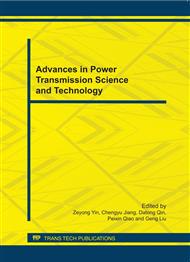p.218
p.222
p.227
p.232
p.237
p.243
p.247
p.252
p.256
New Calculation Method for the Load Capacity of Bevel And Hypoid Gears Based on Loaded Tooth Contact Analysis
Abstract:
At the FZG (Gear Research Centre, Munich, Germany) a research project was carried out to analyze the influence of the hypoid offset on the load capacity of bevel gears by systematic theoretical and experimental investigations. For the experimental investigations two types of bevel gears were designed, one for the pitting tests and one for the tooth root tests. The results of the tooth root tests showed as expected an increasing load capacity with higher offsets. In contrast the pitting tests showed an increasing, but after reaching a maximum, a decreasing load capacity with higher offsets. Regarding the test results a new calculation method was developed that is based on a loaded tooth contact analysis (LTCA). The method is able to consider the local stresses on the flank and in the tooth root. The local strength values are derived out of the standard ISO 6336 for the calculation of helical gears. For bending the local geometry of the tooth root is considered to adopt the strength values of helical gears to bevel and hypoid gears. As a result the local safety factors might be calculated along the face width of pinion and wheel. For pitting the local sliding conditions are taken into account in order to appraise the local lubrication conditions as well as the risk of crack initiations due to shear stresses and higher contact temperatures. The recalculation of the test showed for both types of failure a good correlation between the test results and the calculated values.
Info:
Periodical:
Pages:
237-242
Citation:
Online since:
August 2011
Authors:
Price:
Сopyright:
© 2011 Trans Tech Publications Ltd. All Rights Reserved
Share:
Citation:


